#Inuit College
Explore tagged Tumblr posts
Text
This year some of my favourite books I read were written by indigenous American authors and I just wanted to shout out a couple that I fell in love with
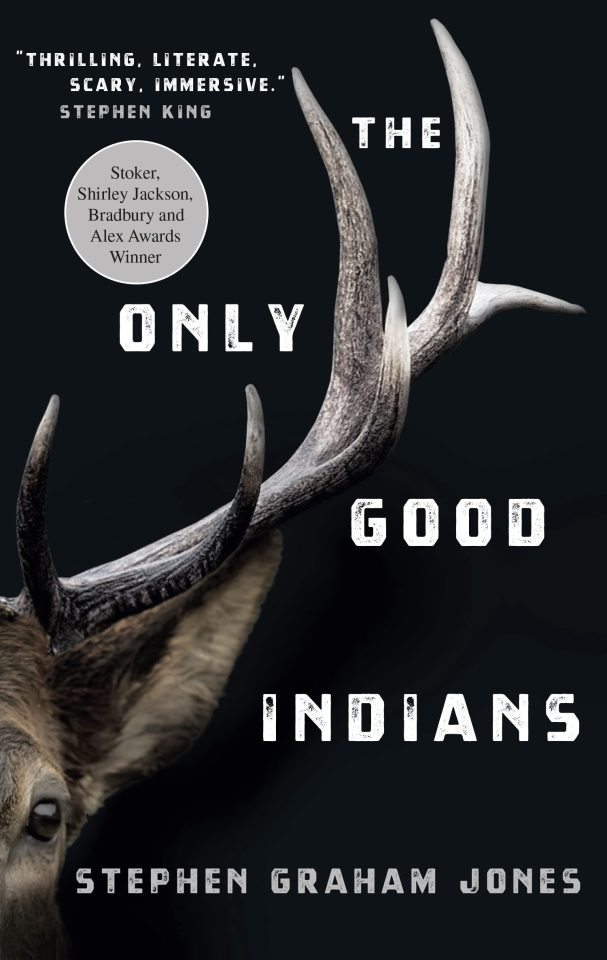
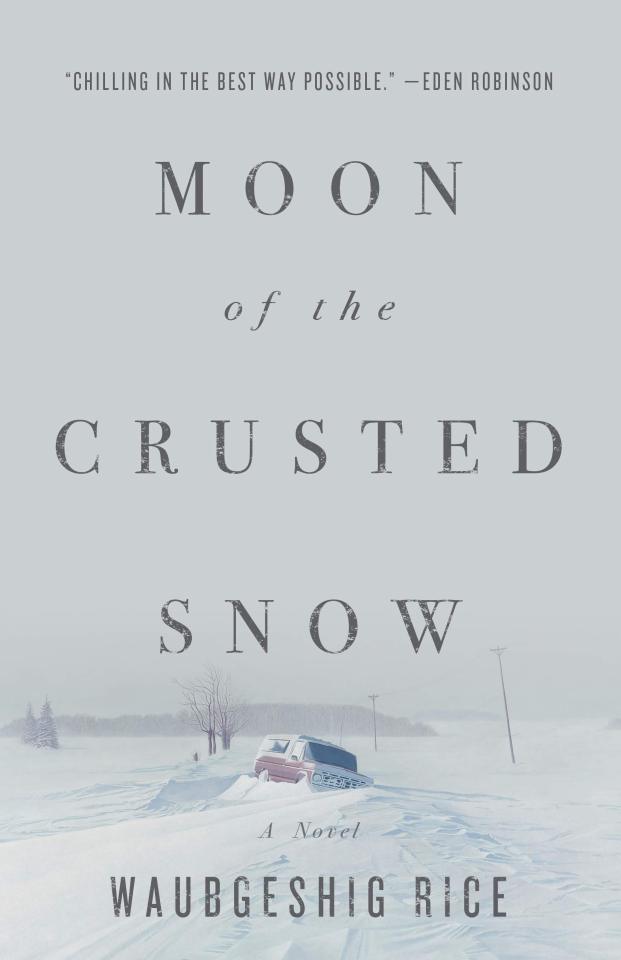

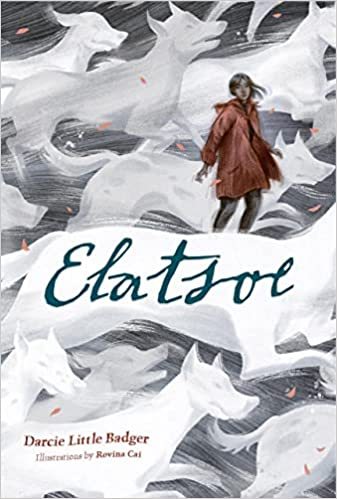

The Only Good Indians by Stephen Graham Jones
Horror being my second most read genre, I did not think books could still get under my skin the way this one did lol. It follows four Blackfoot men who are seemingly being hunted by a vengeful... something... years after a fateful hunting trip that happened just before they went their separate ways. The horror, the dread, the something... pure nightmare fuel 10/10
Moon of the Crusted Snow by Waubgeshig Rice
An apocalyptic novel following an isolated Anishinaabe community in the far north who lose contact with the outside world. When two of their young men return from their college with dire news, they set about planning on how to survive the winter, but when outsiders follow, lines are drawn in the community that might doom them all. This book is all dread all the time, the use of dreams and the inevitability of conflict weighs heavy til the very end. An excellent apocalypse story if you're into that kind of thing.
My Heart is a Chainsaw by Stephen Graham Jones
This book follows Jade, a deeply troubled mixed race teenager with a shitty homelife who's *obsessed* with slasher movies. When she finds evidence that there's a killer running about her soon-to-be gentrified small town, she weaponises that knowledge to predict what's going to happen next. I don't think this book will work for most people, it's a little stream of consciousness, Jade's head is frequently a very difficult place to be in, but by the last page I had so much love for her as a character and the emotional rollercoaster she's on that I had to mention it here.
Elatsoe by Darcie Little Badger
Taking a bit of a left turn but this charming YA murder mystery really stuck with me this year. Elatsoe is a teenage girl living in an America where myths, monsters, and magic are all real every day occurrences. When her cousin dies mysteriously with no witnesses, she decides to do whatever she can, including using her ability to raise the spirits of dead animals, to solve the case. The worldbuilding was just really fun in this one, but the Native American myths and influence were the shining star for me, and the asexual rep was refreshing to see in a YA book too tbh
Split Tooth by Tanya Tagaq
The audiobook, the audiobook, the audiobook!!!! Also the physical book because formatting and illustrations, but the audiobook!!! Tanya Tagaq is an Inuit throat singer, and this novel is a genre blending of 20 years worth of the authors journal entries, poetry, and short stories, that culminates in a truly unique story about a young girl surviving her teenage years in a small tundra town in the 70s. It is sad and beautiful and hard but an experience like nothing else I read this year.
#the only good indians#my heart is a chainsaw#stephen graham jones#moon of the crusted snow#waubgeshig rice#elatsoe#darcie little badger#split tooth#tanya tagaq#indigenous authors#2022 reads#book recs#books#booklr
8K notes
·
View notes
Text
people who go to liberal arts college do not lack drive or focus and it is wrong to generalize them as such. i have three majors, a minor, work essentially a full time job, a part time job and then am also getting a certification that takes up as much time as a full time job. i have one friend getting their five year fast track masters right now, another who has interned in public affairs and is building a buisness from the ground up while in school, and another who is interning at a top law firm over the summer. you cant just make a few connections and dip, then you wont have a degree in anything. me trying to complete my last three assignments are not me hanging around, its me in finals week trying to turn everything in so i can be done. yeah college is not for everyone, but a decent amount of the people who are here have worked hard to be here and are using it for the right reasons, i know i am.
literally all that is standing in the way of me and my degree is
-a paper on captain america being propoganda
-editing a synthesis essay
-a paper on the wild wild historians of the french revolution
-submitting some kind of online training thing
and yet. here i am.
#also inuit poetry is not the only thing liberal arts kids do#where do you think teachers and politicians and historians and copy editors come from#and more#basically dont let anyone tell you your college is a waste of time if you know youre getting something out of it#not a tag#from saph
1K notes
·
View notes
Text
Public Domain Black History Books
For the day Frederick Douglass celebrated as his birthday (February 14, Douglass Day, and the reason February is Black History Month), here's a selection of historical books by Black authors covering various aspects of Black history (mostly in the US) that you can download For Free, Legally And Easily!
Slave Narratives
This comprised a hugely influential genre of Black writing throughout the 1800s - memoirs of people born (or kidnapped) into slavery, their experiences, and their escapes. These were often published to fuel the abolitionist movement against slavery in the 1820s-1860s and are graphic and uncompromising about the horrors of slavery, the redemptive power of literacy, and the importance of abolitionist support.
Narrative of the Life of Frederick Douglass - 1845 - one of the most iconic autobiographies of the 1800s, covering his early life when he was enslaved in Maryland, and his escape to Massachusetts where he became a leading figure in the abolition movement.
Running a Thousand Miles for Freedom by William and Ellen Craft - 1860 - the memoir of a married couple's escape from slavery in Georgia, to Philadelphia and eventually to England. Ellen Craft was half-white, the child of her enslaver, but she could pass as white, and she posed as her husband William's owner to get them both out of the slave states. Harrowing, tense, and eminently readable - I honestly think Part 1 should be assigned reading in every American high school in the antebellum unit.
Incidents in the Life of a Slave Girl by Harriet Jacobs writing under the name Linda Brent - 1861 - writing specifically to reach white women and arguing for the need for sisterhood and solidarity between white and Black women, Jacobs writes of her childhood in slavery and how terrible it was for women and mothers even under supposedly "nice" masters including supposedly "nice" white women.
Twelve Years a Slave by Solomon Northup - 1853 - Born a free Black man in New York, Northup was kidnapped into slavery as an adult and sold south to Louisiana. This memoir of the brutality he endured was the basis of the 2013 Oscar-winning movie.
Early 1900s Black Life and Philosophy
Slavery is of course not the only aspect of Black history, and writers in the late 1800s and early 1900s had their own concerns, experiences, and perspectives on what it meant to be Black.
Up From Slavery by Booker T. Washington - 1901 - an autobiography of one of the most prominent African-American leaders and educators in the late 1800s/early 1900s, about his experiences both learning and teaching, and the power and importance of equal education. Race relations in the Reconstruction era Southern US are a major concern, and his hope that education and equal dignity could lead to mutual respect has... a long way to go still.
The Souls of Black Folk by W.E.B. Du Bois - 1903 - an iconic work of sociology and advocacy about the African-American experience as a people, class, and community. We read selections from this in Anthropology Theory but I think it should be more widely read than just assigned in college classes.
Darkwater: Voices from Within the Veil by W.E.B. Du Bois - 1920 - collected essays and poems on race, religion, gender, politics, and society.
A Negro Explorer at the North Pole by Matthew Henson - 1908 - Black history doesn't have to be about racism. Matthew Henson was a sailor and explorer and was the longtime companion and expedition partner of Robert Peary. This is his adventure-memoir of the expedition that reached the North Pole. (Though his descriptions of the Indigenous Greenlandic Inuit people are... really paternalistic in uncomfortable ways even when he's trying to be supportive.)
Poetry
Standard Ebooks also compiles poetry collections, and here are some by Black authors.
Langston Hughes - 1920s - probably the most famous poet of the Harlem Renaissance.
James Weldon Johnson - early 1900s through 1920s - tends to be in a more traditionalist style than Hughes, and he preferred the term for the 1920s proliferation of African-American art "the flowering of Negro literature."
Sarah Louisa Forten Purvis - 1830s - a Black abolitionist poet, this is more of a chapbook of her work that was published in newspapers than a full book collection. There are very common early-1800s poetry themes of love, family, religion, and nostalgia, but overwhelmingly her topic was abolition and anti-slavery, appealing to a shared womanhood.
Science Fiction
This is Black history to me - Samuel Delany's first published novel, The Jewels of Aptor, a sci-fi adventure from the early 60s that encapsulates a lot of early 60s thoughts and anxieties. New agey religion, forgotten technology mistaken for magic, psychic powers, nuclear war, post-nuclear society that feels more like a fantasy kingdom than a sci-fi world until they sail for the island that still has all the high tech that no one really knows how to use... it's a quick and entertaining read.
64 notes
·
View notes
Text
Two graduates of an Inuit-led post-secondary program — one from Baker Lake, Nunavut, and another from Nuuk, Greenland — say Nunavut Sivuniksavut gave them confidence and a chance to learn in a culturally safe environment, informed by Inuit history, experience and values.
"Literally my whole life I thought there was something wrong with me. I felt like I was dumb, I could never do my homework," said Nivi Rosing, from Nuuk, who just graduated from the one-year Inuit Studies program at Nunavut Sivuniksavut (NS).
The Ottawa-based program launched in 1985 with just two teachers and 10 students. Since then, more than 600 Inuit youth have attended. The program uses Inuit history to inform and empower students. This year, the program welcomed 57 students and now offers one- and two-year certificate programs accredited through Algonquin College, but taught at its own location on Rideau Street.
Growing up in Greenland, Rosing said colonial education had always been a problem for her.
"All the material we have in colonial institutions, I could literally not relate to them," she said. [...]
Continue Reading.
Tagging: @politicsofcanada
116 notes
·
View notes
Text


On November 3rd 1819 the physician and naturalist Henry Duncan Spens Goodisr was born.
Henry was born in Anstruther, Fife, the son of a surgeon, his elder brother was Prof. John Goodsir, who became Professor of Anatomy at the University of Edinburgh. Harry as he became known, was trained in Edinburgh, where his lecturers included the infamous anatomist Robert Knox and was licensed by the Royal College of Surgeons of Edinburgh in 1840.
Harry served as Conservator to the Museum of the Royal College from 1843 until 1845, when he was appointed assistant surgeon and naturalist to the Franklin Expedition. This sailed to the Arctic aboard two ships, HMS Erebus and HMS Terror, under the command of Captain Sir John Franklin, in search of a North-West Passage from the Atlantic to the Pacific Ocean.
Last seen in July 1845, the expedition was the focus of numerous searches and much speculation. His brother Robert Anstruther Goodsir, sailed twice to the Arctic in an attempt to determine the fate of Franklin's Expedition. Through talking to the Inuit, Orcadian John Rae was finally able to solve the mystery in 1854. The ships had become ice-bound and eventually the entire crew of 129 had starved to death.
Goodsir's name was inscribed on the Franklin Memorial at the entrance to the Chapel of the Old Royal Naval College in Greenwich. Over the succeeding years, the remains of several individuals were discovered in the vicinity of King William Island in the Canadian Arctic. In 1869, the American explorer Charles Francis Hall was shown a grave by local Inuit on the island. Based largely on the clothing, the remains were identified as those of Lieutenant H. T. D. Le Vesconte and were returned to Britain to be interred beneath the Franklin Memorial at Greenwich.
Further investigation in 2009, which involved facial reconstruction and isotopic analysis of the teeth, led to the conclusion these were not the remains of Le Vesconte rather they were most-likely those of Goodsir. It was my friendr Leonard Low who questioned the identity of the bones...his full story and facial reconstruction is in his book Largos Untold Stories, Leonard opened up his own Witchcraft Museum in Leven earlier this year.
The Goodsir Papers, held by the Royal Scottish Geographical Society, comprise letters sent by Harry to his family before his disappearance. In 2018, a plaque was laid by family members near the spot where Goodsir died on King William Island.
The second pic is a memorial is to commemorate the Goodsir family in Largo and Newburn Parish Church.
10 notes
·
View notes
Note
Your post on Silna’s ethnicity was very interesting! After the end of the show, could Silna have been able to join another group or find the Utkuhikšaliŋmiut? If she wasn’t in exile for the death of the Tuunbaq.
And some more questions (if you don’t mind!) - in a modern AU, what ethnicity do you think Silna would identify as? If she could speak an Inuit language/dialect, which one? Most of the people I know who live around Franklin Expedition related places speak Inuinnaqtun or Natsilingmiutut (which I believe is Utkuhikhalik, from Gjoa Haven) but I know next to nothing about linguistics.
Prefacing this with the caveat that these are all merely the opinions and cultural understandings of a white non-Native person from Alaska. Much of this more specific ethnographic and linguistic info is from Knud Rasmussen, Jean Briggs, Alana Johns, Joke Schuit, the Interviewing Inuit Elders series from Nunavut Arctic College, the Ikajuqtigiit Society's Natchilingmiut Uqauhingit, tusaalanga.ca, and the few years I've had of Iñupiatun lessons. I am by no means an expert!
If Silna were to reconcile with Tuunbaq's spirit after its death, then her exile might be lifted because her shamanism would no longer be an uncontrolled threat to those around her. But that's just me desperately postulating; perhaps Tuunbaq's death itself imposes a lifelong spiritual quarantine upon any person in its proximity. I don't know the precise taboos at work, but the application of traditional taboos was most strict around occasions of birth and death. Adhering to spiritual prohibitions, such as observing a set period of isolation, was believed to help avert misfortune and illness.
But were she not a danger to people, Silna absolutely could join the Utkuhikšaliŋmiut! Though hostilities with Natchiliŋmiut and Iluilirmiut are said to have contributed to movement of Ugřuliŋmiut southward, and while kin endogamy was preferred, intermarriage between neighboring Inuit groups was relatively commonplace, and migration already obligatory. Inuit in the region were mostly patrilocal nomads: women were more likely to marry out due to typically not needing as intimate a familiarity with their family's hunting grounds as men. Warfare also sometimes involved the abduction of wives; the custom of female infanticide especially during times of extreme hardship resulted in an unequal ratio of men to women. Which is to say that Silna, as a probable Ugřuliŋmiutaq, might join or be joined with any Inuit group in reach.
Ugřuliŋmiut emigrants are known to have become Utkuhikšaliŋmiut, Hanniŋajurmiut, and Ualiakliit, all of whose subdialects are labeled Utkuhikhalik. The Ualiakliit might speak what is a variety of Hanniŋajurmiut subdialect. Speakers were later resettled largely in Uqšuqtuuq (Gjoa Haven), Talurřuaq (Taloyoak), and Qamani’tuaq (Baker Lake), influencing the Natchilik, Arviligřuaq, and other dialects likewise pushed into the same settlements. Out of the Natsilingmiutut varieties, Utkuhikšalik language is most distinct from Natchilik and Arviligřuaq, with some lexical and phonological differences. Inuinnaqtun is very closely related, and is also now spoken in Uqhuqtuuq!
Either Utkuhikšaliŋmiutut, Natchiliŋmiutut proper, or Arviligjuarmiutut would make obvious sense for a modern Silna to speak, and if her family now or then is made of speakers from multiple dialects she'd quite likely be able to codeswitch between those dialects. And nearby or coexisting dialects such as Inuinnaqtun make sense too! The more recent the AU, the more one can probably cast other, farther-away Inuit as Silna's family, given a believable enough backstory (though I do suggest that one keep some direct connection between her and the Qitirmiut region, as for instance still having her father or a direct ancestor be an Inuk from Uqšuqtuuq).
The +miut postbase is also used in more than ethnonyms, because it is tied to dwellership! One may see it lexicalized in other terms as well, such as in aŋutikšat imarmiutat: “sea mammals,” with aŋutikšat “mammals, beasts, wildlife” in apposition with imarmiutat “inhabitants of the water.” The postbase naturally may be attached to the names of modern settlements and other placenames, so nowadays a resident of Gjoa Haven is an Uqšuqtuurmiutaq, a resident of Kugaaruk is a Kuugaarřuŋmiutaq, and so forth.
Were Silna to join the Utkuhikšaliŋmiut, she would both become and would not really be an Utkuhikšaliŋmiutaq; she'd retain her ethnic identity as an Ugřuliŋmiu even while identified with the local community and its country. The context and situation would inform whether she is defined as an Utkuhikšaliŋmiu or not.
Silna would probably identify as Inuk in a modern AU! Although one could very easily conceive of a modern AU wherein she has heritage from any Inuit-Yuit-Unangan language-speaking people (especially what with the book applying the meaning of Iñupiat, Inuinnait, et cetera: “Real People” to the word Inuit: “People;” the show taking inspiration from Yup’ik mask traditions for Aja's mask; Nive Nielsen being Kalaaleq; etc.). In which case, she'd use the most common ethnonym (Kalaaleq, Iñupiaq, Yupiaq, Yup’ik, Cup’ig, Sugpiaq, Unangax̂, etc.), and if she has inherited multiple tribal affiliations she would formally introduce herself with all of them. These are related but very distinct languages and cultures!
“Eskimo-Aleut” is the older academic name for the Inuit-Yuit-Unangan language family, with “Eskimo” encompassing the languages of Inuit and Yuit including Sugpiat, and “Aleut” being the language of Unangan, but “Aleut” is the exonym first applied to Native peoples during Russian colonization and is still preferred by both Unangan and Sugpiat/“Alutiit” over the other later exonym “Eskimo.” Some organizations and people, particularly elders in rural Alaska, might still identify themselves in English as “Iñupiaq Eskimo” or “Yupiaq Eskimo,” with acceptance of the exonym in its function as an umbrella ethnonym, but it is more often a slur in Canada and Greenland, and more neutral, precise endonyms are generally preferred, especially by younger or urban people. “Esquimaux” is the older French spelling that may carry slightly less stigma in English. While “Inuit” is sometimes applied to Inuit, Yuit, and Unangan collectively as a replacement umbrella term, it is not totally interchangeable, for it remains an exonym to Yuit and Unangan etc.; though the words Inuk, Iñuk, Yuk, Cuk, and Suk are all clear cognates. “Kalaallit” is the ethnonym for Inuit of Greenland/Kalaallit Nunaat, probably borrowed from a Norse exonym.
Lowercase “inuit” in Inuit language is the generic noun for all humans (lowercase in Latin orthography, whereas syllabics have no upper/lowercase distinction). An “inuk” is also the yolk of an egg, or the resident spirit of something such as a natural feature, e.g. of siḷa, sila, hila: the air, weather, atmosphere. Iñupiatun for “the resident spirit of the air” is siḷam iñua; the Terror novel appropriates this phrase with unconventional orthography for Silna's group name: “sixam ieua,” but the “spirit-governor-of-the-sky” is literally of the air, its resident spirit. Siḷam is in the singular relative noun case: “of the air” or “the air's.” Iñua is the absolutive noun iñuk with the singular-to-singular possessive noun ending: “its resident spirit.” Hilap inua is the same spirit as the one whose Inuktut proper name is Naarjuk or Naarřuk, who may also be referred to by residence alone: Sila or Hila. These three concepts refer in fact to the same spiritual figure, whereas they are misrepresented in the book as being separate from each other. None are to my knowledge an actual ethnonym, though Naarřuk, Hila, etc. are indeed anthroponyms. Do not listen to Dan Simmons.
“Indian” historically was and is not an English ethnonym usually applied to Inuit, Yupiit, Sugpiat, or Unangan peoples, but is an official legal term that is identified with other Native nations of Alaska. It may also be used as a slur, but many people still self-identify with this word, particularly as its own umbrella. “First Nations” is the main Canadian term, with “Native American” being more U.S. American. The modern ethnonym “Tinaaq” was borrowed into the Iñuit language from the Dené language endonym “Dena,” as the old Iñuit language term means “one that has or has the quality of or association with louse eggs” and is therefore considered offensive.
For those in Alaska the preferred English umbrella ethnonym is “Alaska Native” (applied to all Native peoples of Alaska, listed alongside “American Indian” on the census) as well as simply “Native.” I don't know enough about Russia, Canada, and Greenland to speak on preferred terminology there, other than that “Indigenous” is broadly accepted as a general term. Should Silna in one's modern AU have friends or family who are of another, non-Inuit-Yuit-Unangan Indigenous nation, be sure to do one's research on/take into account the relevant histories, intercultural relationships, attitudes, and experiences of whom one is representing, as one ought to best do anyway. Of course, multiethnic/multiracial people will face specific sets of circumstances.
If one's modern AU does expand or change Silna's ethnicity so that she grows up, say, Yup’ik in Alaska, remember that the language landscape will be different depending on the area and its history, e.g. with Moravian missionaries in much of that area having learned and translated into Yugtun as opposed to having suppressed it, there was a somewhat higher level of postcolonial Native language preservation than elsewhere in the state. The impacts of cultural assimilation and boarding/residential schools were widespread and considerable, vary a bit in different places, and if Silna or her parents were fostered or adopted by non-Native people it is very unlikely she would be a first-language speaker/signer of her heritage language(s). English also now dominates as the lingua franca even when it is not already instilled as a first language for many. Other major colonial languages across the larger region include Russian, French, Danish, and ASL.
I operate on the basis of my headcanon that Silna's father, Aja, and therefore Silna, must have known a local variety of Inuit Sign Language, since it would be indispensable for a person whose tongue is removed, presuming a sign language is still permitted to them. The novel has Silna and her family using a sign language of string figures. This is inconvenient and unrealistic in that using string figures as morphemes ideally requires a string and is more tedious; the spirit of the string games, Tuutaŋŋuarřuk (who makes string figures with his own intestines), is said to attack those who want to play too much; and there is already a preexisting normal sign language. While the language's history is not well-known, it is thought to have developed among Deaf Inuit, from and with the signs that hunters used to coordinate and that facilitated the communication between speakers of different Inuktut dialects as for instance during trade relations; it is signed by both Deaf and hearing Inuit. The absolute certainty of this headcanon of mine decreases for a modern AU, since modern schooling has so stifled Native languages and ensured that most Deaf/HoH Inuit learn American Sign Language (ASL) and Manually Coded English (MCE); ISL or Inuit Uukturausingit (IUR) is thus very endangered today (estimated <40 monolingual signers). IUR is, however, currently attested to be signed in Baker Lake, Rankin Inlet, and Taloyoak, and so Silna's family being signers who are from one of these places is more than plausible!
It is valuable that one decide Silna's specific heritage and community for one's AU, because this will inform what she speaks and/or signs. In introducing herself to someone nowadays she may say who her parents are and where she's from, or this would simply be integral to the grounded establishment of her character. I don't know if she would use the “Natsilik Inuk” umbrella term for herself in a modern AU; please defer to the opinions that Inuit from the region have about its usage for themselves! But if in use as an umbrella term, it would be in addition to the particular ethnonym(s) inherited from her family.
Silna in a modern AU being among the many who are struggling against Indigenous language loss would make for one of several meaningful, tragic, yet more prosaic analogs to her canonical speechlessness. She could have Inuktut, IUR, and English as her first languages, and, frustrated to see the loss underway, partakes in revitalization work, or perhaps she is monolingual in a colonial language and is only just beginning to learn her heritage Native language(s) after a difficult, discouraging history. Either way, it depends on how she was raised, on what her community, family, and father passed on to her, and that depends on communal and personal reactions to the traumatic impact of forced cultural assimilation.
#long post#the terror amc#silna#meta#asks#thank you for the ask! apologies for the length!!#i have rambled#lady silence#language#ethnonyms#links not exhaustive#please do chime in with opinions or corrections!#my posts
19 notes
·
View notes
Text
Franz Boas
Franz Boas was not the father of American anthropology. But the fact that so many people think he was shows how thoroughly his relentless energy transformed the discipline as we know it today.

Boas around age four
Boas was born in Germany in 1858. He grew up in the shadow of events that happened a decade earlier: The famous ‘Revolutions of 1848’, when people across Europe demanded an end to imperialism, monarchy, and the poverty caused by the Industrial Revolution. Boas grew up in a household of “forty eighters”, and became deeply committed to the ideals of liberty and progress which drove the revolutions. As a young man, Boas received a rigorous education and spent most of his free time outdoors, exploring the natural world. Like his idol Alexander von Humboldt, Boas combined a romantic wonder at nature's rich diversity with a naturalist's love of science, rigor, and classification.
Boas was Jewish, but not because he wanted to be. His parents were wealthy merchants for whom 'progress' meant shedding the ancient superstitions of the past. He didn't have a choice: Germany had given Jews the right to vote and own property, but remained an antisemitic place. Boas was labeled a Jew by others. So he learned to be fearless: In college when he was insulted he demanded a duel. He and his opponent would don goggles to protect their eyes, and then use their sabers to try to slash open each others’ face. “With the damn Jew baiters this winter one could not survive without quarreling and fighting.” He wrote his worried parents, reassuring them. “I remain unmolested since every student here knows that I would not be shy to defend my affairs with the sword.” He was not exaggerating. "He bears the mark of his German university training literally," the Maori anthropologist Te Rangi Hiroa noted, "in a somewhat disfiguring scar across his face". Indeed, one of the first things people noted about Boas were his scars.
Although he was academically gifted, Boas ended up doing a Ph.D. in the unprepossessing university of Kiel. His sister Toni was ill and the Boas family was tight-knit: He went to go live with her. The result was a miserable experience writing a Ph.D. on the color of seawater. His main discovery was that it was incredibly hard to measure the color of sea water. Later on, when he studied how perception is shaped by culture, these insights would come to help him. At the time, he was miserable.
Then love struck: Boas fell head over heels for Marie Krackowizer, a German-American lady whose family of “Forty Eighters” had fled to the US. She loved him too, but they could not be married until he got a job. For that, Boas needed to “habilitate”, a level of education above a Ph.D. He decided on a trip to the arctic, where he would study the influence of geography on Inuit people. He paid for it by writing an account of his travels for a German newspaper, and with a gift of money from the man who would be his principle benefactor in years to come, his uncle Jacobi. His parents insisted that he take along the gardener, Willie, so that he wouldn't be alone.

Boas posing in a German photography studio for an image to share with people demonstrating what his life had been like in Baffinland.
Boas spent a year in Baffinland, an island in the far, far north of Canada. The trip was unbelievably dangerous: Ships had to dock at the edge of the ice and then people would walk across the ice to the island. In the winter it was -40 degrees. Luckily Boas was energetic, focused, and driven by huge energy. He was the sort of person who was disgusted at himself for only working 20 hour days. He did research during the day and read Kant at night. Above all, he came to see Inuit people as people. "The more I see of their customs, the more I realize that we have no right to look down on them," he wrote to Marie in a letter that was spattered with the blood of the raw seal liver he had been eating.
Boas's trip was a success. He habilitated and married his sweetheart Marie. Together they created a loving and warm family. Professional success eluded him, however. Antisemitism made it difficult for him to find a job in Germany, so he moved to the US, where Marie’s family was — there were more opportunities there and Franz was also attracted to America as a land where his political ideals of liberty and freedom were more realized than they were in Germany.

Franz and Marie's wedding portrait.
Unfortunately, Boas found that there were few good jobs for geographers in the US. What people were interested in was Native Americans. Back in 1879 (when Boas was still in school) anthropology as a modern discipline was born in the United States. The goal was to understand the 'natural history of mankind', which in the US meant the origins of Native Americans. Were had they come from and what were they like? Previous answers -- tenuously derived from the Bible -- were clearly inadequate in light of new theories of evolution.
So Boas retooled himself as an anthropologist. He made multiple trips to the Pacific Northwest, a region that he is most closely associated with today. Still, he struggled. He got a dream job as a professor at Clark, a brand new university — only to have the university close down after a few years. He organized anthropological exhibits at the World's Fair at Chicago, hoping it would lead to a permanent position, but it didn’t. It was a dark time for Boas. His third daughter, Hete, was born in Chicago, caught whooping cough, and died in his arms. She was ten months old. Finally, Boas took a job at the American Museum of Natural History in New York and started teaching part time at Columbia. Finally in 1899, at the age of forty, he got a permanent position: He was now a faculty member at Columbia.

"Boas with the George Hunt family. Left to right, standing: David, George, Lalaxs'a, Mary (Ebbetts), Jonathan and Franz Boas. Sitting: Marion and Lucy. From row: Mary and Stanley" from Franz Boas: An Illustrated Biography
At Columbia, Boas was cutting edge. At a time when Harvard and Yale were just beginning to update their medieval curriculums, he had a Ph.D., the new research-focused degree that had made German universities world famous. Boas made history by being the first person in the US to offer a Ph.D. His students included Ruth Benedict, Edward Sapir, Margaret Mead, Robert Lowie, Alfred Kroeber, and many others.
Boas was also a tireless organizer, sitting on boards of journals, foundations, and associations. These positions allowed him to control funding and direct it to students. He was also a close friend of the millionaire feminist and activist Elsie Clews Parsons, who herself funded an entire generation of anthropological fieldwork. Boas worked his students very, very hard but also showed them tremendous loyalty. Boas not only lent money to students in times of need, in one case he signed on as a guarantor of a student loan, agreeing to pay it if the student defaulted.

Boas around the time he began working at Columbia.
True to his principles, Boas believed in meritocracy: If you could do the work, that was all that mattered. As a result he trained a generation of female students at a time when many universities didn’t accept female students at all. He also had few illusions about how much a white person could learn spending their summers on a reservation. For him, the best anthropologist was an insider with scientific training. As a result, he mentored scholars like William Jones (a Fox Indian) and Zora Neale Hurston.

“Elsie [Clews Parsons] and colleagues at. Lounsberry, mid-1920s. On the porch, Elsie (in shadow on left) talks with Pliny Goddard; on the steps are Margaret Mead, Esther Goldfrank, Franz Boas, and Mrs. Nelson”. Via Deacon’s Elsie Clews Parsons. This picture illustrates the close ties Boas had with his students.
In fact, Boas was an uncompromising opponent of racism. Famously, in May 1906, he traveled to Atlanta University at the invitation of W.E.B. Du Bois and gave a speech claiming black people were biologically equal to white people. This was not a small thing in the Jim Crow South. Four months later, 25 black people were killed in Atlanta in a riot against black people that turned into a massacre. Then in 1909 Boas and a team of twenty researchers made 13,000 measurements of the children of immigrants to see whether they inherited their parents’ ’racial’ features. To his own surprise, Boas found that they didn't -- height, weight, and other factors were the result of the environment, not heredity. His students did similar research. Margaret Mead wrote a paper demonstrating the black people in the Midwest (where there was a strong public school system) did better on standardized tests than poor southern whites: schooling, not race, seemed to determine intelligence. Southern politicians repressed the study.
Boas’s relationship with indigenous people was more complicated. He was not a champion for Indigenous rights. He considered Native Americans conquered by the US and on the verge of cultural and biological extinction. His goal was 'salvage': to make a record of a disappearing culture the same way we have a record of Ancient Greece and Rome. He worked with many indigenous informants like George Hunt, who he paid to write letters detailing their customs. This relationship remains an object of scrutiny today: Did Boas exploit Hunt? Was Hunt Boas’s teacher and mentor? How much should someone be paid to write descriptions of salmon fishing in 1900 anyway?
Whatever we think of Boas’s relationship with Indigenous people today, at Columbia no one thought Boas was a friend to white people. He was considered a dangerous radical who had to be canceled. Not only did Boas attack the racial foundations of America, but when the US entered World War I, Boas was became a public enemy for opposing the war. Remember, this was a time when people where lynched for being German in the US. Columbia stopped paying him. They kept him from teaching undergraduates. They took space away from the department, leaving him with just his office. Boas was, essentially, canceled by the right.
What’s more, Boas's life was beset by personal tragedy. In addition to the death of his ten month old daughter in 1894, in 1924 his daughter Trudel died of polio. In 1925 his son Heini was killed in a car accident. Then in 1929 his wide died in a hit and run accident - the driver who hit her was never found. Boas's misery was palpable even before Marie's death. In 1927 he wrote to his son Ernst:
"I have not the light spirit of others and when I do not work, or else am intensely occupied with something else I can think of nothing but Trudel and Heini. They are there when I get up in the morning and when I stop work at night they are there… If I do not work these thoughts would destroy me." [L-Z v2 275]

Franz Boas featured on the cover of the 11 May 1936 cover of Time Magazine. In his old age, Boas's fight against racism became popular in America again as the US prepared to fascism in Europe.
Late in life Boas received the recognition he deserved, becoming a world-renowned scientist. In America, his anti-racist thinking became more and more recognized as America geared up to fight fascism. In Germany, an event was scheduled to give him an honorary degree. The degree was canceled and his books were pulled from the library and burnt by the Nazis. His last great work of activism was to help Jewish and leftist scholars flee the Nazis and get visas to come teach in America.
When Boas retired, he handed Columbia a gift: despite its attempts to derail him, he had created perhaps the greatest department of anthropology in the United States. And yet here failure dogged him. He had hoped his students Alfred Kroeber and Edward Sapir would come to Columbia to continue his work. Instead they stayed at Berkeley and Yale. His successor became Ruth Benedict, but she was then pushed aside by the administration and replaced by first Ralph Linton and then Duncan Strong.
Boas suffered many setbacks in his life, but he also overcame many obstacles. He lived an extraordinary life: Born before the Civil War, he lived to see the Pearl Harbor bombings. He trained the anthropologists who went on to start departments at Yale, Berkeley, Oregon, and many other places. He produced his famous “six foot shelf” — enough books on Kwakwakwakw that is longer than I was tall. After his death, his grandchildren and George Hunt’s grandchildren had a family reunion, and Hunt’s great grandchildren study anthropology in University. Despite his incredible age, Boas did not live to see just how influential he would become. Although he did not know it at the time, he became one of the few people Boas did not quite Although he may not have recognized or admitted it, he had in fact become one of the most important anthropologists in the world, and left an indelible imprint on the discipline for generations to come.
Sources: This was drawn from Rosemary Lévy-Zumwalt's two volume biography of Boas. The quote from . The reference to 1879 as the 'founding' date of anthropology comes from https://www.jstor.org/stable/658142?seq=1 . The Te Rangi Hiroa quote is from Na to Hoa Aroha volume 3. The blood stained letter is from George Stocking's "From physics to ethnology", p. 148
13 notes
·
View notes
Text


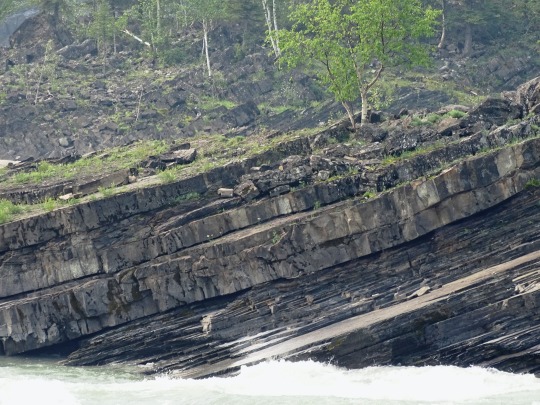







Whirlpool Canyon, BC (No. 4)
According to Norse mythology, the first humans, Ask and Embla, were formed out of two pieces of driftwood, an ash and an elm, by the god Odin and his brothers, Vili and Vé. The Vikings would cast wood into the sea before making landfall. The location of the wood would be an indication as to where to build their mead halls. The wood used would found the high-seat pillars of the new hall.
Driftwood carried by Arctic rivers was the main, or sometimes only, source of wood for some Inuit and other Arctic populations living north of the tree line until they came into regular contact with European traders. Traditional Inuit boats such as the kayak were fashioned from driftwood frames covered in skins. The Inuit classified driftwood into seven different types, each possessing its own unique material and visual properties. Driftwood could be used to make bows if it was straight grained and in reasonably good condition; these were reinforced with sinew cables. The Inuit even made arrows from driftwood; these were often short and fitted with bone or antler foreshafts. Dry scrapings produced by working this material were collected, stored and used for the starting of fires year-round by Inuit. Wood that is burned today in these regions mainly consists of the remains of condemned wooden structures. Driftwood is still used as kindling by some. Woods with resinous qualities, such as cedar, are preferred for their lengthier burning times.
The "Old Man of the Lake" in Crater Lake, Oregon is a full-size tree that has been bobbing vertically in the lake for more than a century. Due to the cold water of the lake, the tree has been well preserved.
Alice Gray, the legendary "Diana of the Dunes", who fought to preserve the Indiana Dunes which contain quantities of driftwood named her college "Driftwood", and made all her furniture from driftwood.
Source: Wikipedia
#Skooks Landing#driftwood#Whirlpool Canyon#shale Rock#butterfly#wildlife#fauna#animal#BC#Liard River#travel#original photography#vacation#tourist attraction#landmark#landscape#countryside#British Columbia#woods#forest#nature#flora#tree#river bank#wildfire smoke#summer 2023#Canada#view#vista point#boreal forest
14 notes
·
View notes
Text
Ides of July
Every year about this time I start complaining about the heat, and every year summer just goes right on summering. These temps are never a surprise, and always widespread, so why do I act as if this weather is a personal attack? It's just so...gross.

They should just skip that whole "real feel" estimate and say Gates of Hades. We did have a lovely couple of days with rain on and off. That cooled things off a tiny bit and gave the gardens a good slurp. I suppose I should be grateful for that and stop complaining about everything else. I should, but I probably won't. As I type this, the mister is driving home from the Baltimore airport. He was down in Atlanta for a few days and will probably be happy to sleep in his own bed tonight. I suppose I should make him something yummy for dinner, but what sounds good when it's this hot? <---Told you I wouldn't stop complaining. Speaking of my other half, last week we celebrated 40 years of marriage. FORTY YEARS. These two kids (and their teeth) managed to find each other and write a story together.

With those braces and that airplane tie he would have been irresistible to 5th grade me. A few months after that photo was taken I was also sporting braces, amazingly enough both of our kids escaped the Bucky Beaver trauma. That little girl was in Alaska and that little boy was in Florida but the universe had already decided that their paths would cross. I suppose those pics are a bit misleading, we actually have an eight year age difference. So when I was in 5th grade, that boy was heading off to college. Still, the stars aligned and tossed us together as adults and we've been on this journey together ever since. Our first date was in April of 1982 and we were married in July of 1984. That adds up to 42 years of laughing at each others jokes, sharing adventures, celebrations and sorrows, and sometimes wondering what kind of weirdo we married. I have no advice for young couples, we did as many things wrong as we've done right. Everyone will tell you that communication is important, and that's true. But half of any happy couple understands that sometimes what you choose not to say is as important as what you do say. Of all the people in the world that you should be kind to, it should be the one you chose as your partner. Just be nice to each other, that takes care of an awful lot. Thank goodness those two goofy kids found each other. Without Mickey and Nancy there'd be no Matthew and Tyler and that would be a terrible loss for the world. They're exceptionally good people. How two knuckleheads like us managed to create and raise such wonderful men remains a mystery, but oh, they are the beat of my heart and the breath in my lungs. Always have been, always will be. Those two boys were always my reason - my reason to be strong, my reason to laugh, my reason to hope, my reason to try harder, my reason for being. I'd do anything for them. What a gift they've been. I just looked through a few old photos to choose a sweet one of Matt and Tyler to put at the end of this paragraph. I came across this one and laughed out loud. Here's proof that they were always my reason.

That was snapped in one of the most miserable places on Earth - Barrow, Alaska (now named Utqiagvik) in 1990. Those are my boys standing in front of a pile of whale blubber.

No internet, no cell phones, isolated from everything - the only way in or out was by plane. It was a dirty, drunken village and I couldn't wait until our time there was over. On this day a native whaling crew had good luck and had pulled a bowhead ashore. They were carving it up and distributing choice pieces, and the mood was celebratory. Although foreign to us, I wanted our boys to understand the importance of the event in Inuit culture. Down to the beach we went, my two little guys were spiffy and clean, dressed in bright primary colors. My parka was pink. We couldn't have been more obvious outsiders. Everything in Barrow was brown or gray, even things that didn't start out brown or gray. But those sweet faces, in the midst of all of that grime (environmental and social), their eagerness to learn, and the way we stuck together and made the best of everything, made even that rotten place bearable. Where would I be without those two? Wow, I went off on a ramble and dragged you with me. All of that to say that I'm glad two buck-toothed kids got hitched and hit the jackpot with their offspring. Forty years in and we still have chapters left to write in our story. Aren't we lucky ducks? I'm grateful every single day. My apologies for this disjointed post. I sat down at the keyboard with no topic at hand and let my mind wander. That's probably not a good idea. Still, it gives me a chance to have a chat with you, share some nonsense, and send some love out into the ether. I think we all need a little extra right now. The world is nuts, the news is always scary, but we can get through it together. "Even in times of elephantine vanity and greed, one never has to look far to see the campfires of gentle people." - Garrison Keillor I see you there, you lovely, gentle people - and I hope you can always find my campfire and know that you are welcome. Stay safe, stay well. XOXO, Nancy
3 notes
·
View notes
Note
pls pls pls do au explanation,, I am so fond of ur characters
Nonnie, I’m honored. But buckle up because jesus christ there are so many of these fucking things Cherry (@trantors) and I keep coming up with almost every week. Some end up getting fleshed out more than others, and we keep jumping back and forth between them (though we seem to both be VERY into the Terror Fang au lately lmao)
The first and the probably most fleshed-out (in my mind) au is the Baffin Bay Museum and Aquarium AU (aka a Modern AU- think like the vibes of like the life is strange series but without the supernatural phenomena). In our little fictionalized costal nova scotia town of Baffin Bay, Francis Crozier is the newly promoted director of the museum, who oversees all departments after the recent and sudden retirement of former director John Franklin, but with the museum being underfunded, understaffed, and with low visitation, the stress of the job begins to get to him, on top of pressure from the local inuit community for historical/ecological outreach that they weren’t given under prior leadership, and a particularly nasty break up with Sofia Cracroft (who happens to be on the board of directors, who effectively pulled out upon Franklin’s retirement, leaving Francis with the burdens of keeping the museum running- but facing closure due to this sudden change). Despite his stressors and increasing alcohol consumption, a romance blooms between him and a member of the aquarium staff; Genevieve Sinclair (aka: OUR GIRL LADY TERROR), who cares for the seals in the aquarium. Much of this au is taking a lot of the themes from The Terror and throwing them into a more modern setting, and similarly finding ways to overcome them (and also for the Francis/Lady Terror side of things, discussing problems of modernity and addiction recovery and the way that effects perspectives and relationships- because I have studied the subject intimately and it’s one of those things about Crozier that made me fall in love with him and respect him like a whole bunch and I just think transferring that to a modern setting is a potent subject for lady terror to be involved in). Features include: Historical Ship Tours, museum politics, wildlife conservation and rehabilitation (both of animals and people), Frazzled grad student Jopson who is just trying to get his degree, nepo baby fitzjames, Blanky (running the historical ship attraction), his wife Esther (who owns the local favorite Cairn Diner, which all the staff frequent) and their two nightmarish twins. College besties Silna, Gen, and Amelia (who they take on as a promotional photographer and social media manager). College Buddies Francis, Blanky and James Ross (who all have matching tattos). Francis falling in love in rehab, Trauma from The Troubles, Francis in leather and jean jackets with patches about eating pussy that he wears while riding his motorcycle (literally this is what this au started from), neptune love, and just a whole lot more (literally there’s so much to this au Cherry I hope I got it right feel free to elaborate).
An offshoot of this au (constructed just last week) is the science research/selkie AU, in which fitzjames and a team of scientists (including lady terror) travel up north to do research on seal behavior only to make a shocking discovery: a man living solitarily up there with a mysterious seal fur coat that he keeps on his person for survival. Little does he know that there is another like him on this same expedition, and a kinship that is formed between them. (this one definitely hasn’t been as fleshed out as others but Cherry and I are working on it. All I know at this point is cute selkie courtship swimming and fucking on their coats out on the ice in the moonlight and thats it. Because thats the kind of horny bitch that I am).
Next up is the newly dubbed Terror Fang AU (aka: Vampires+. Think The Little Vampire meets Interview meets Dracula meets a whole bunch of other more niche mythical creatures that don’t often get a nod in a multiple mythical creatures universe- let alone with vampires). The story primarily centers around Amelia Dale (Cherry’s OC), a human painter, who travels to an island off the coast of England looking for employment, and when lost in a storm stumbles upon a castle belonging to Francis and Lady Terror (vampires both), who absolutely insist not only that she stay the night and wait out the storm, but to commission her to paint a new portrait for them in exchange for free housing and an extremely generous patronage. Amelia agrees, of course, but learns very quickly that not all in this grand house is as it seems, and that this vampiric lovers’ nest she’s fallen into is not as monstrous as she’s been led to believe (and, in fact, her presence brings out the best of her host’s humanity, unfortunately to great consequence). Features include: thousand year old once-celtic warrior Francis, Lady Terror with Witch Trial Trauma, intricate vampire wedding rituals, Brownie Butler Jopson, Fawn Blanky (the Groundskeeper), Kelpie Little, werebear woodsman Collins, intrepid experimental mythological creature doctor Goodsir, Selkie Silna, a fucking elitist Vampire Council to which Franklin, JFJ, Sofia and Ross belong, and van-helsing type (but low-key vampire wannabe) Hickey. (this one is easily becoming a favorite and in fact I am attempting to build their castle in The Sims. it’s nuts. I love them.)
Then there’s the western AU, taking place in a smart little upstart of a town called Terror Creek (think like Deadwood meets red dead redemption meets ravenous). Francis is the local sheriff, along with deputees Little, Hodgeson, Jopson, and Fitzjames of course, and Lady Terror is an entrepreneur who was sent by her father to oversee the construction of the railroad through the town (which she by proxy of her father owns). As a shy love blooms between them, dark deeds begin to occur in the surrounding woods, which they will be forced to contend with and investigate in order to successfully establish this township. Features include: Francis respecting whores but also being too lovesick to actually sleep with them, Tailor Amelia (who unfortunately has had to mend Lady Terror’s shifts multiple times and it’s all Francis’ fault). Cute cowboy antics.
The final AU is one that technically began most of my endeavors with Lady Terror, but which the story has outgrown. Based on 1899 mostly (because I had watched that not too long before the Terror got me in a chokehold), but also with some very Ridley Scott elements, it follows the story of The Terror, but in space with a matrix-y bent in which the crew is trapped in a simulation, destined to repeat until a certain solution is reached (in which, all historical trappings remain). And in this one, the twist was that upon waking from the time loop via his survival, Francis discovers that Lady Terror is his ship’s AI who helped him lock everyone into stasis to spare them from an alien creature that has infiltrated the ship (and actually, this is where the Lady Terror nickname came from- as she is a literal representation of the ship itself, but has since taken on a whole new meaning). Features include: Building a fully functional body using the ship’s 3d printer so they can continue to be lovers when they’re not in the simulation, time loop shenanigans, falling in love every time, spacer general JFJ, and much more.
And I think that about covers the major ones. We HAVE dipped our toes into a pacific rim kinda AU as well but I've been warned on pain of death not to get too deep bc we have too many already. will actual fic for these see the light of day? who knows. but they are very fun. much to think about.
#so many of these fucking things but by god I do love them#yeah francis and LT are that 'i would fall in love with you in any universe' kinda couple at this point for me#and it's everything#also did I mention everyone ends up being polyam in like all of these? yeah? yeah#anyway#the terror#terror fang au#baffin bay au#terror creek au#selkie au#1899 au#uh#yeah#lady terror#francis crozier#amelia dale#egg's oc's#cherry's oc's#(good god our oc's man)#idk I'm taking a shot in the dark tagging this thing like how??? anyway#ask games#I told y'all there was a lot and THESE SYNOPSES AREN'T EVEN THE TIP OF THE ICEBURG OF WHAT WE'VE WORLDBUILT WHAT WE'VE PLANNED NARRATIVELY#we are fucking insane for this tbh
11 notes
·
View notes
Text
Fashion's Poet of Black : YAMAMOTO
by Suzy Menkes, for the New York Times (2000)
For the first time in recent fashion memory, black — essential, existential black — is no longer the ultimate symbol of cool. Black has dominated designer dressing, just as it has clad the entire fashion profession, since the wave of Japanese style swept over fashion in the early 1980s.
But now color has burst into the autumn clothes. Bright hues and subtle patterns are challenging dark and monochrome — and nowhere more so than from the designers for whom black was once the only fashion creed.
Yohji Yamamoto has built a career on proving that black — aggressive, rebellious, somber, romantic or seductive — is beautiful. He, more than most designers, is the poet of black, the director of fashion's film noir. In fact, a celluloid version of his favorite men in black was shown Saturday at the Venice film festival, where Yamamoto designed the costumes (not to mention the loud jewelry) for "Brother," a new movie by Takeshi Kitano about the yakuza, Japanese gangsters.
What is the lure of black that Yamamoto has been addicted to it since he first graduated from fashion college in Tokyo in 1969?
"Why black?" says Yamamoto, sitting in his Paris studio, black beard and black hair above a dense black honeycomb sweater, mat-black pants and black sneakers flashed with scarlet.
"Black is modest and arrogant at the same time," he says. "Black is lazy and easy — but mysterious. It means that many things go together, yet it takes different aspects in many fabrics. You need black to have a silhouette. Black can swallow light, or make things look sharp. But above all black says this: 'I don't bother you — don't bother me!"'
All this is said with a merry smile that belies Yamamoto's reputation as a designer of clothes for earnest intellectuals. Recent collections have shown rather a whimsical sense of humor: the Inuit-inspired autumn line with its russet paisleys and furry hoods, and the 1998 "wedding" show, in which a bridal "striptease" took models from inflated Victorian crinolines to slim-line dresses and pants.
For men, the art-director image of black suit with truncated proportions, shown on brawny-to-scrawny guys, has also been replaced by a more macho, even rock-star look. (As recreation, Yamamoto plays guitar or harmonica with a group called Suicide City.)
Yamamoto cut his fashion teeth in his widowed mother's dressmaking business, but rebelled at the clients' arriving with magazine styles to copy.
"At the very beginning, I just wanted women in men's style," he says. "Typically Japanese women were wearing imported and very feminine things and I didn't like it. I jumped on the idea of designing coats for women. It meant something for me — the idea of a coat guarding a home, hiding the woman's body. Maybe I liked imagining what is inside."
When an avant-garde buyer gave Yamamoto his first corner in a store, he was faced with what he calls elliptically "very strong competition" and "the start of my Olympic games." He was referring to the designs of Rei Kawakubo, his long-term partner and fashion picador under her label Comme des Garcons. Together — yet with entirely separate aesthetics — they created dark shrouds, asymmetrically cut in fluid, indeterminate shapes, and sheltering sweaters that clothed the acolytes of the all-black cult.
Of course, Japanese designers did not introduce black to 20th-century fashion, as witness the Parisian elegance of Coco Chanel's little black dress or Yves Saint Laurent's tuxedo, and rebellious style from Beatniks through Marlon Brando. But there was an abstraction, a modernism and a lack of visual definition in the work of fashion's avant garde that seemed to be layered in meaning, in the spirit of Mark Rothko's "dark" paintings.
Yamamoto, born in 1943, describes a "lost" postwar generation, educated to look to America or Europe and ignore Japanese tradition. So when his experiments in pushing the boundaries of shape and proportion were hailed as "Japanese" style, he was baffled.
Yamamoto sees his original look emerging from punk. His first collection was presented in Tokyo in 1977 and in Paris in 1981 when the "Japanese" (including Issey Miyake and Kenzo Takada, who were five years his senior) seemed diametrically opposed to everything that French fashion stood for: its well-defined cut and silhouette, its familiar fabrics, its conception of female allure and coquetry. Even 15 years later, when Carolyn Bessette Kennedy favored Yamamoto's designs in the mid-1990s, her choice of flat-plane, dark clothes to frame her good looks still seemed revolutionary.
The French electronic musician Jean-Michel Jarre once defined Yamamoto's style like this: "His work is totally different from anything else. I like the quasi-religious approach he has to fashion. For me, a woman in Yohji is like a nymphomaniac nun. His clothes are at once sensual and very ritualistic."
That phrases captures the eroticism lurking under the skillful tailoring of a purist exterior. In his genuine affection for women, Yamamoto stands apart in a fashion world where male designers tend either to idolize or to dislike the female sex. He admits that "my life is thinking about women."
"First my mother — last my daughter," he says. "And in between are all the secret ones."
Mother, daughter and son (who has brought him a granddaughter) all work in the business: His mother is the revered directrice; his daughter was launched in March, after three years as pattern cutter, as designer of the ready-to-wear line called Y's bis Limi. The proud father claims, "She'll be strong — she'll be bigger than me."
Yamamoto's career reached its zenith with the 1998 "wedding" collection. It confirmed the new, romantic path he had taken as he shifted register from masculine to feminine. The catalyst was his study of haute couture. He pored over the neo-Edwardian gowns of the American designer Charles James at the Brooklyn Museum of Art in the summer of 1999, when he was in New York to pick up an American Fashion Award. In the jigsaw of pattern pieces he uncovered "another designer's process."
The museum has now asked him to curate a fashion exhibition from its archives. It will open in autumn 2001 and thus commemorate the anniversary of 20 years showing in Paris, although Yamamoto says he is thinking not of his past but of "tomorrow and the day after tomorrow." At 56, he thinks vaguely of retiring and of fulfilling his ambition to write. He worries that others might think, "Yohji, you have sung your song already."
A recent Yamamoto signature has been the swoop of a back, from the geisha-esque curve of the nape through the base of the spine to the neo-Victorian bustle.
"This is my fetish idea for a woman's body," he says. "I like the back curve line of women. I am always watching the silhouette in the streets. The rib cage and the hip is very important for me. The image represents the back of a woman. I'm always following her. Don't go! Don't leave me!"
Don't count on Yamamoto, or his women, turning their backs on black.
11 notes
·
View notes
Text

— RISE WITH THE MOON, A PRIVATE, HIGHLY SELECTIVE KATARA, OF ATLA. EXPLORING ELEMENTS OF AFRO-INDIGENOUS CULTURE, COLONIZATION, GENOCIDE, BREAKING TRADITIONAL GENDER ROLES, HORRORS OF WAR, GRIEF, LINGERING TRAUMA, LOST — RISE WITH THE SUN,

001. pinterest 002. dossier 003. playlist
refer to me as kai, she/her, black, CST, 21+. faceclaim, evangeline charlie, an afro-inuit model. affiliated: @hotknickers, @yourideaguy; other blogs: @phoenixrsing
001. selective, private, always ready to write! just be cool. 002. very busy, i be teaching college and stuff. 003. she/her, black, call me kai. 004. katara's fc is afro-inuit, therefore that will be blended and reflected in her characterization.
3 notes
·
View notes
Text
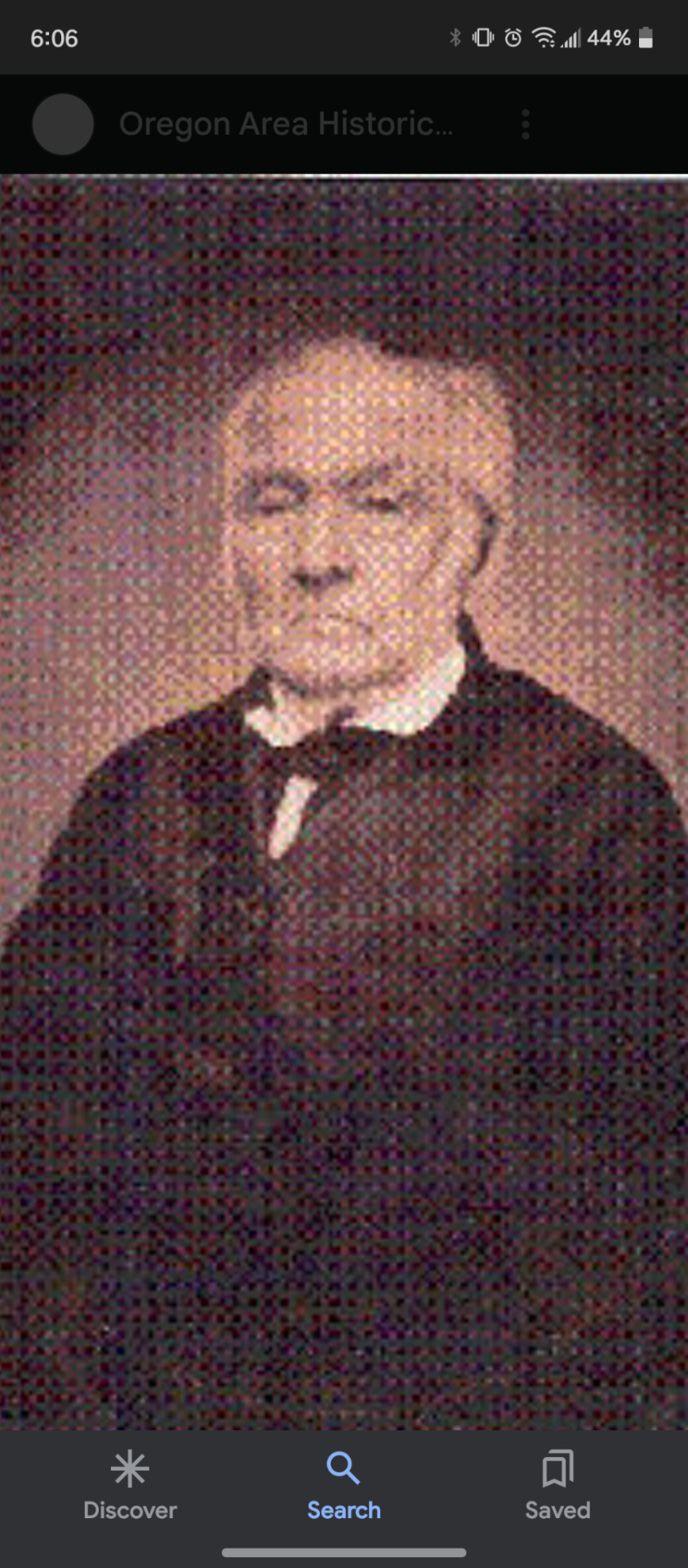
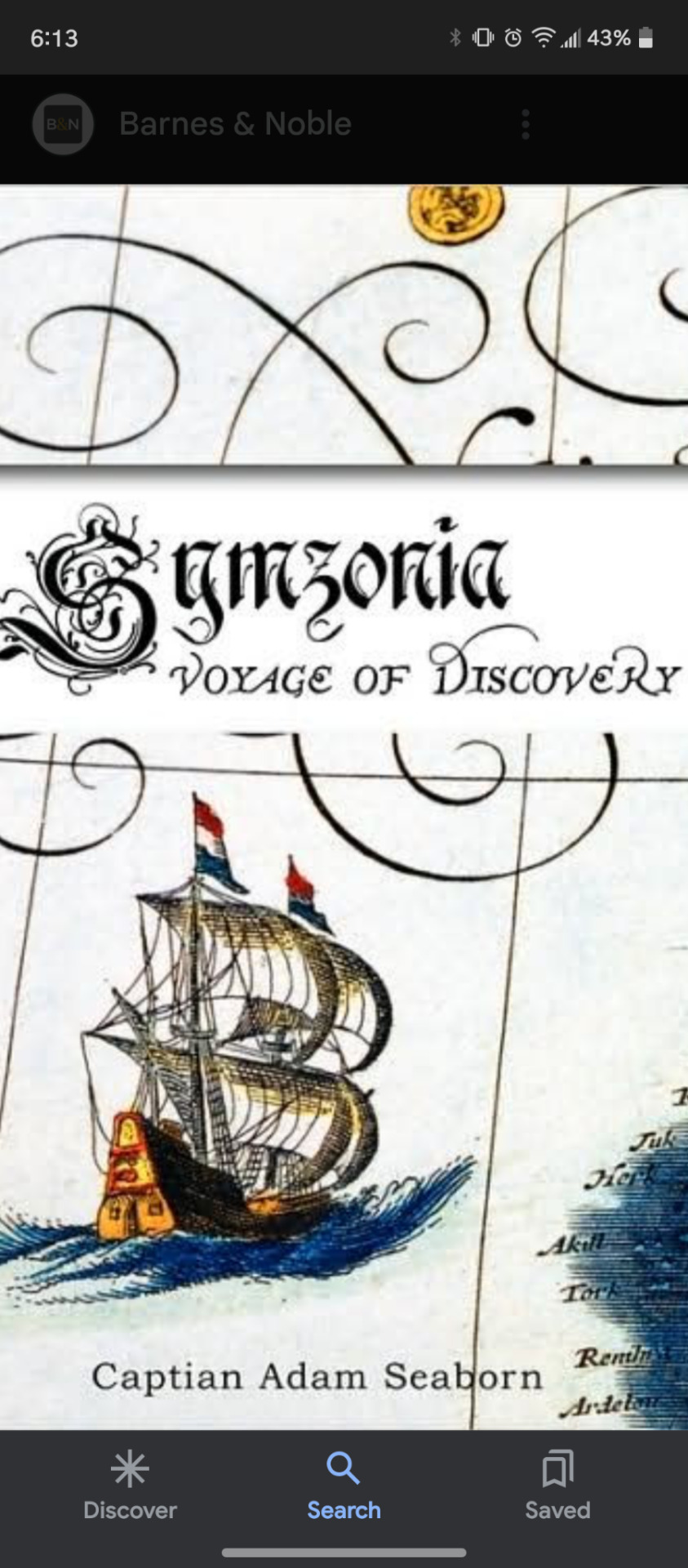
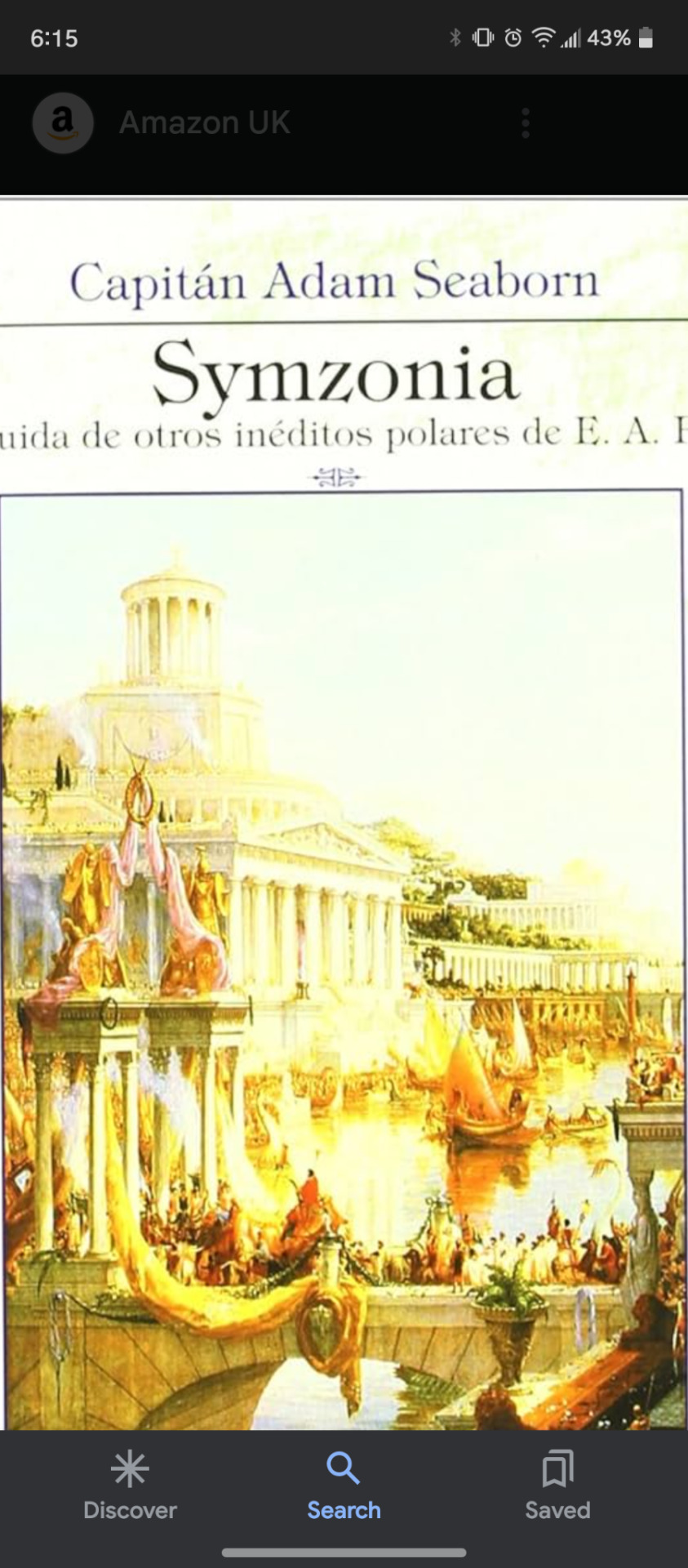
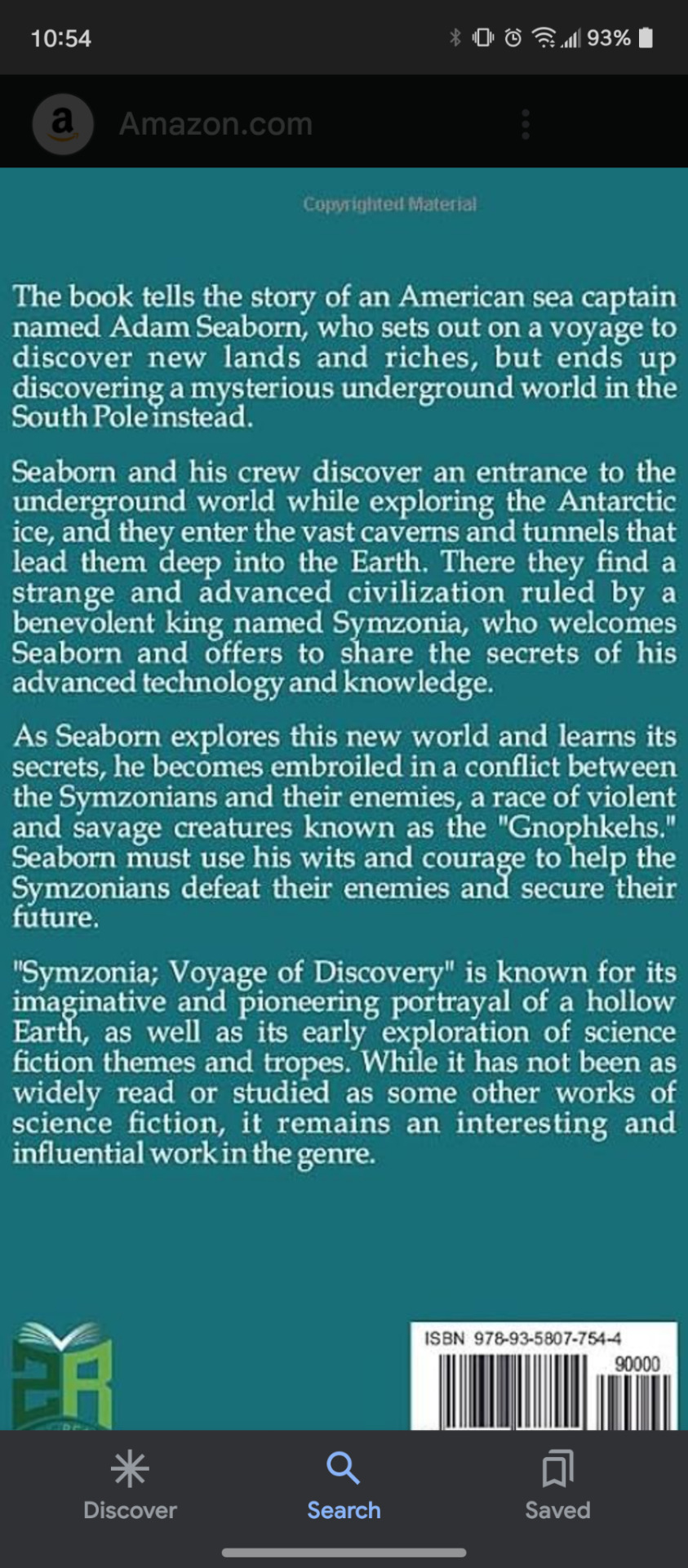
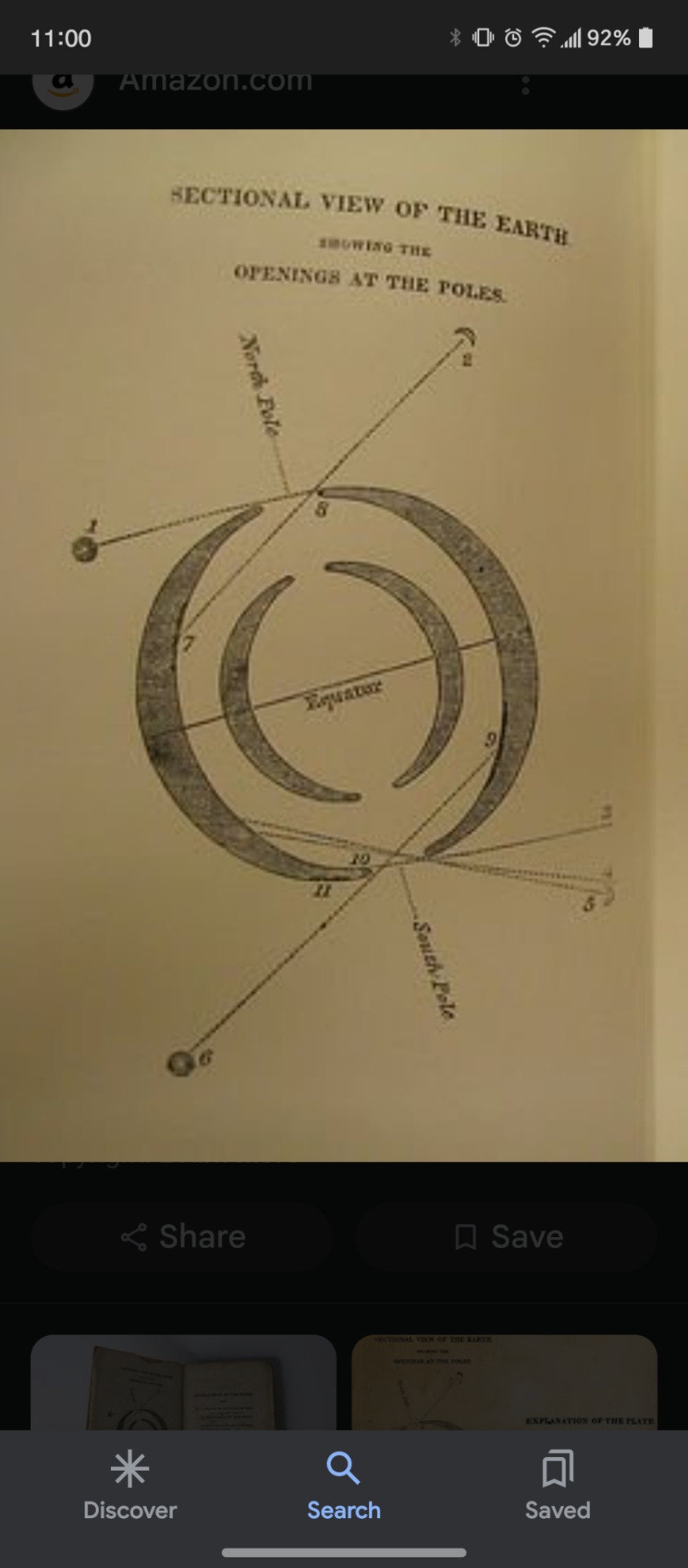
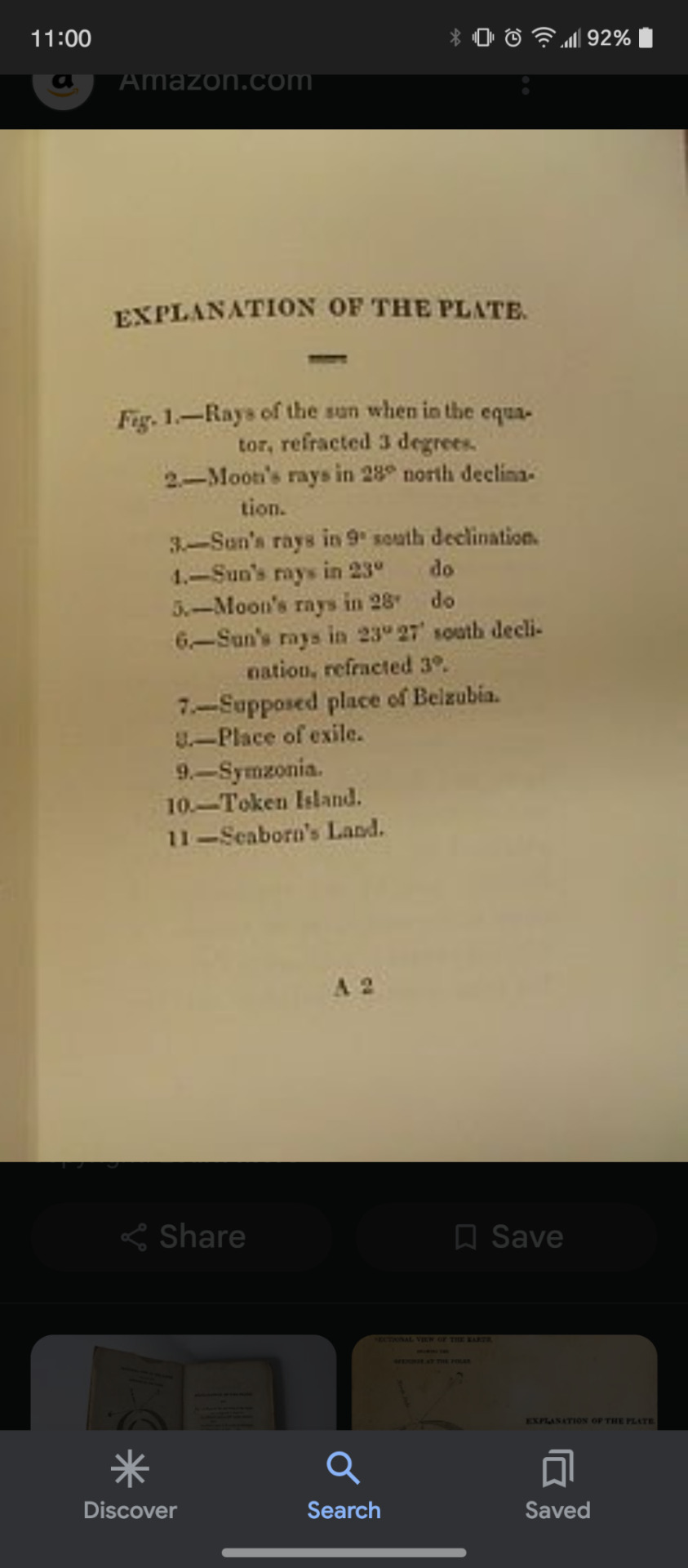
Pics:
1. Photo of Nathaniel Ames, the most probable writer of "Symzonia" - at least, according to a computerized literary comparison program.
2 & 3. Covers for reissues of this odd sea adventure, Lost Race & utopian novel.
4. Back cover of 1 of the "Symzonia" reissues.
5. Cross section of this Hollow Earth. This chart is half of Pic # 6, which explains certain particulars on the cross section.
6. The other half of Pic # 5. It notes certain places on the cross section. Even, in 'fact', the angles of light - from the Sun & Moon - that light up this Inner Earth.
1906: The Earth (is) Not Hollow.
Intro: Just 2 years after J.C. Symmes started lecturing upon a Hollow Earth, "Symzonia, A Voyage of Discovery" was printed in 1820. It was supposed to be written by its hero, one Captain Adam Seaborn.
Its true author, however, is still a bit of a mystery. Through a meticulous computerized literary comparison, its most probable writer was found - one Nathaniel Ames.
However, several other authors (like Johnathan Seymour & J.C. Symmes himself) are still in the 'running'...
Author: Nathaniel Ames was the "black sheep" of his prominent family. (His dad turned down the presidency of Harvard.)
Ames said he was too wild for any college. So, he spurned family & fortune to become "Black Bill", a common sailor!
After 12 years at sea, he settled in Providence, R.I. - as a 'mere' merchant & author of 3 books of memoirs - with sketches...
Plot Wise: Adam builds the ultimate steam ship - specifically designed for polar exploration. He also gathers a suitable crew of sailors & scientists.
But, getting there isn't easy.
They face off against a treasonous crewman, nasty weather, food shortages & detailed bouts of sea charting, solar positioning & normal life aboard such a ship.
After visiting several run of the mill islands, they steam right thru the South Pole & into Symzonia.
In this internal continent, they find a # of subterranean animals & people. And, an exchange in cultural satire vs utopian ideals follows.
Adam represents a warlike, greedy & vice-ridden external world. Yet, the wise & peaceful Symzonians educate the Captain on their society.
Their social structure is basically, an extreme form of Marxism!!
Sadly, this is when racism rears its ugly head. These 'perfect' beings are all "alabaster skinned."
But, the external world bears various 'shades' of 'swarthiness!' The Inuit, for example, are sinful outcasts ejected into the icy Northern wastes.
The further you get from this interior world, the darker a person's skin - & the worse their 'habits' get...
Surprisingly, Adam advocates for the abolition of slavery.
Criticism: Some readers found this novel to be a long, boring comparison of a corrupt society vs an utopian one.
Others say this story engages in social satire. Or, that the book is just a silly parody.
Even that it's penned by a true believer is in question. The earnest silliness makes it hard to tell...
The best parts mix fear with the marvels of Symzonia. Such as the "portents of doom":
1. The compass spinning wildly as they pass the Pole.
2. A shipwreck of alien design.
3. An unknown mammoth beast.
4. The Symzonian's airships...
Anyway, Adam soon becomes involved in the Symzonian 'problem' with the Lovecraftian sounding Gnophkehs...
Legacy: It's said that "Symzonia" inspired Edgar Allen Poe to write 2 stories:
1. "Message in a Bottle" &
2. "Narrative of Arthur Gordon Pym."
The last of which, in turn, inspired Lovecraft to write "At the Mountains of Madness."
"Symzonia" was reissued around 1979.
Then, Seattle KRAB radio station aired this book's only known adaptation - an 8 part, 4 hour series.
Plus, the New England Quarterly was the 1st to posit Ames as the possible author of "Symzonia."
Finally, the book sank back into literal obscurity. Ames, just like his fictional Captain Adam, died poor & forgotten.
2 notes
·
View notes
Text
The college that regulates Manitoba's physicians is apologizing for its current and historical failure to respond to Indigenous-specific racism in the medical profession.
The College of Physicians and Surgeons of Manitoba (CPSM) said its responsibility also extends to the racist actions and inactions perpetuated by physicians, residents, medical students, clinical assistants and physician assistants.
"We accept this responsibility, and we apologize," said the statement, which was delivered by college representatives at the Special Chiefs Assembly on Health Legislation, hosted by the Assembly of Manitoba Chiefs, on Tuesday.
"CPSM apologizes to First Nations, Métis and Inuit children, families, and elders for the racism that has occurred in their medical care, whether it was in the care they received, or should have received but did not. We apologize for the intergenerational trauma, suffering, poor health outcomes, and death that this has caused."
Action needs to follow words: college
It also stated that a pledge to stamp out racism wouldn't be enough.
"Recognizing racism in ourselves will neither be comfortable nor easy. We will ask and intend to be guided by Indigenous physicians, scholars, elders, and knowledge keepers along with the legal and ethical requirements to provide respect, dignity, and equitable health care for Indigenous persons in Manitoba."
The apology comes four months after Indigenous leaders and politicians signed a declaration to eradicate anti-Indigenous racism in northern Manitoba's health-care system.
Continue Reading.
Tagging: @politicsofcanada
#cdnpoli#Manitoba#Indigenous persecution#Healthcare#racism in healthcare#colonialism#genocide tw#child death tw#murder tw#child abuse tw#death tw
42 notes
·
View notes
Text


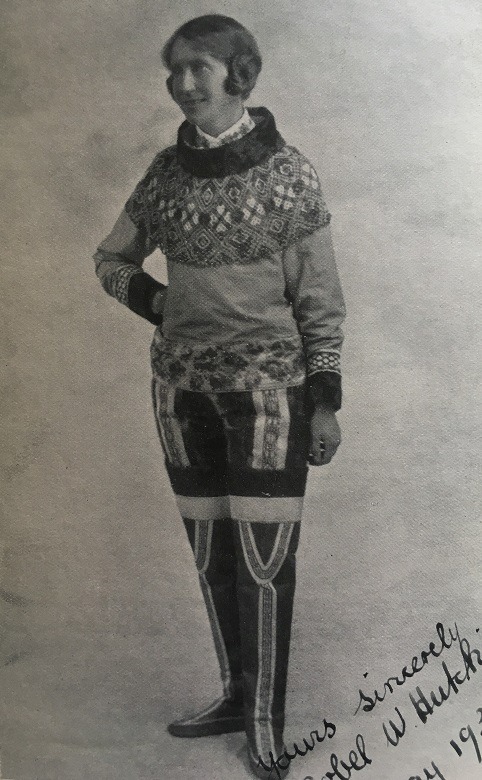
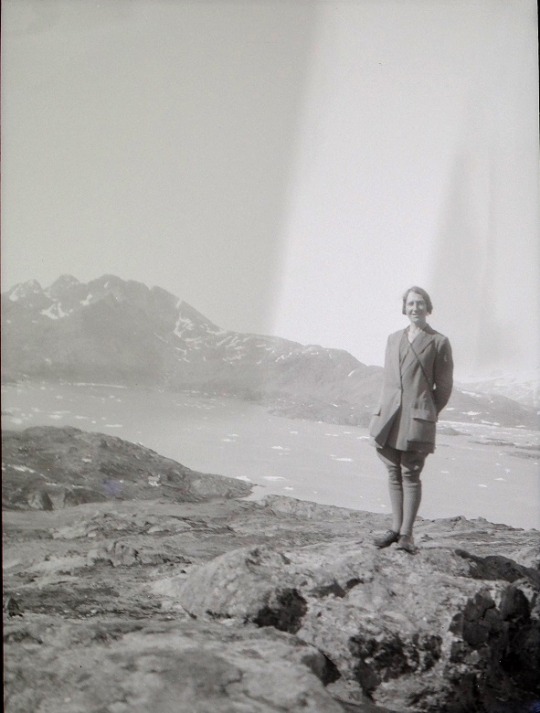
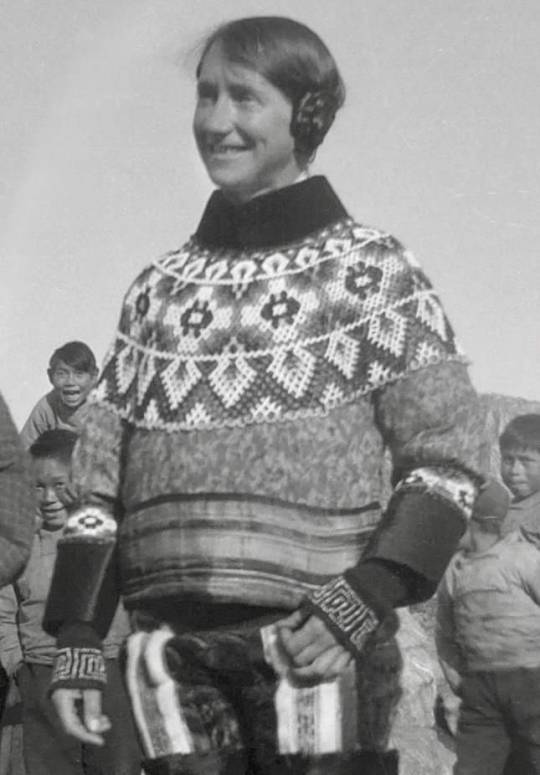
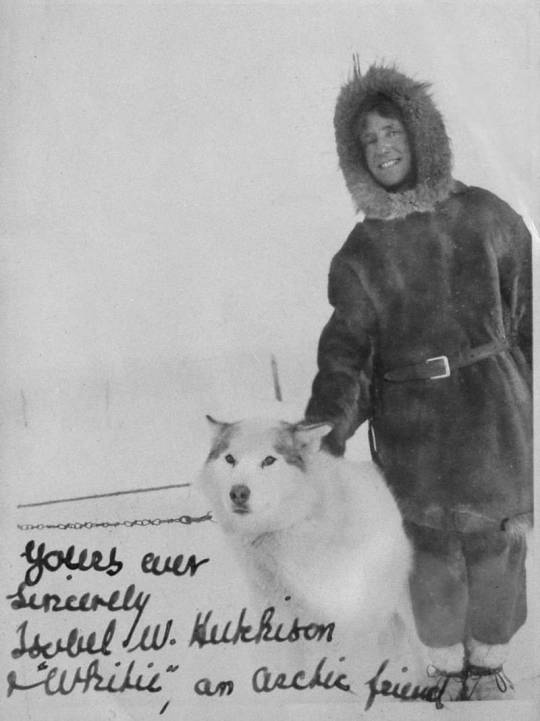

30th May 1889 saw the birth near Kirkliston of Isobel Wylie Hutchison.
This is a great tale of a remarkable strong willed woman bucking the trends and behaviour expected of a lady back in the mud 20th century.
Isobel Wylie Hutchison was an Arctic traveller during the 1920s and 1930s. She was also a botanist, a writer, a poet, an artist and speaker of numerous languages, so a bit of a polymath.
Carlowrie Castle a Scots baronial mansion was the comfortable upper-middle class home into which Isobel Wylie Hutchison was born in 1889. It was there her father, Thomas Hutchison, a successful wine merchant in Edinburgh, looked after his gardens, and passed on to Isobel his fascination for plants and his habit of meticulous note-taking. Although called a castle, Carlowrie was built between 1852 and 1855, so was never a defensive structure, but a luxurious home.
Isobel’s father, Thomas Hutchison, was a successful wine merchant in Edinburgh, he was a keen gardener and passed on to Isobel his fascination for plants and his habit of meticulous note-taking.
From 1917-18, she studied at an agricultural college, after which, she visited a number of countries around the Mediterranean region. But the sudden death or her father was subsequently followed by the loss of both her brothers. Isobel was left in a darkened place with a deeply grieving heart. Walking became her escape.
At a time when women were expected to stay at home, dressed in petticoats and tending to domestic duties, Isobel would often leave home for several days – much to the despair of her mother!
A Gaelic speaker, she had soon covered Scotland, including a trek from Blairgowrie to Fort Augustus, and began to look at bigger challenges. She wanted to spread her wings and fly away, and Iceland seemed like a good place to start.
Iceland, which she visited in 1925, was both a test and a revelation. She was told that she couldn’t walk the 260 miles north from Reykjavik to Akureyri because there were no maps, no guides, and it was far too dangerous. But she proved everyone wrong and then set her sights on another goal: Greenland.
By now, Isobel was making a name as a traveller in the Far North. She had written books about her experiences in both Iceland and Greenland. However, she hadn’t quite finished her Arctic adventures! She made arrangements to travel to Alaska and Northern Canada to explore and again, collect plant specimens. In May 1933, Isobel left Manchester and went by ship, riverboat, train and also plane, to reach Nome in Alaska.
Eventually, she arrived in Barrow, in the north of Alaska, where she transferred to another small vessel before the Arctic Ocean ice began closing in, making it impossible to travel any further. Isobel was forced to stay in a migrant Estonian’s hut for many weeks until the weather situation improved. Although her journey had come to a halt, it was an opportunity for her to visit local Inuit families, walk, travel by dog sled and stay in igloos. Eventually, she continued her Arctic trip with a 120-mile dog sled journey and crossed over into Canada. After many months in the Alaskan and Canadian Arctic she eventually returned to Scotland, having been away for around a year.
Unable to obtain permission from the Soviet authorities to visit Eastern Siberia, Isobel’s next northern journey was in 1936, to the Aleutian Islands, off the coast of Alaska. This thousand-mile long archipelago of both large and small volcanic islands draped like a gigantic necklace between Alaska and the Kamchatka Peninsula in the far east of the USSR. These islands were inhabited by Aleut people on treeless terrain and were exposed to continuous windy, foggy and stormy weather.
The Aleut people of the islands were able to live in such extreme conditions because they managed to catch a range of marine life. Fortunately, she was able to visit many of the inhabited islands by way of US government vessels. Invariably, landing on the islands involved negotiating heavy seas in wild conditions. However, when she did make land, she met with the local inhabitants, generally explored and was able to collect her plants.
The onset of World War Two curtailed any plans for further journeys into the Arctic. After the war, she completed a number of long treks, including walking from her home in Scotland to London, from Innsbruck to Venice, and from Edinburgh to John O’Groats. Isobel Wylie Hutchison passed-away at her home in Carlowrie Castle in 1982, aged 92.
The Arctic journeys of Isobel Wylie Hutchison were extraordinarily daring during a time when such trips were unheard of for a single woman. She developed a real passion for the North as she explored various regions of the Arctic world. Isobel was a true adventure traveller, enjoying the uncertainty of her journey, taking calculated risks, but being utterly intrigued by all she saw in the Far North.
14 notes
·
View notes
Text
Week 9 Fandom: How does fandom influence inclusivity in the world of pop culture?
In the world of pop culture, fandoms are links that bring together individuals who have a common interests. As these communities go through change, they play an important role in shaping the landscape on inclusiveness in the world of pop culture.
Bridging Realms of Diversity
Fandoms are diverse melting pots that cut over social, cultural, and geographic barriers. Enthusiasts from many backgrounds gather in these groups, brought together by a mutual appreciation for a certain facet of popular culture, whether it a cherished novel series, a highly anticipated movie, or an immensely popular video game (Robbins & Kullman, 2020). For me, it would be “Avatar: The Last Airbender”. At first when I was getting into this animated series I felt like an outcast. Nobody seemed to be interested in it and it made me feel alone. That was until I met my college course-mate who was also interested in this animated series. Mind you both of us had nothing in common before this. He was the quiet kid in class and I was the social bee. We rarely talked until we both found out that we liked the same animated series. Now, even though both of us have gone our separate ways we still do keep each other updated on the latest news on this animated series and both of us are highly anticipating the upcoming live action version that will be coming out on Netflix next year. This shows that people are able to identify common ground in this setting, which fosters a sense of belonging that transcends conventional societal barriers.
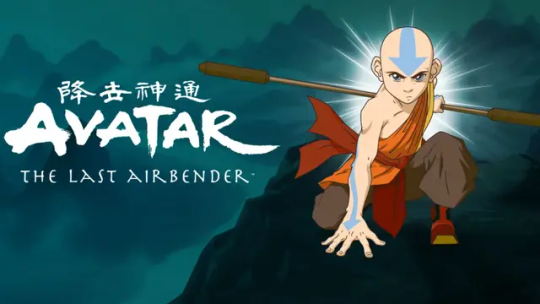
Celebrating Representation
In fandoms, inclusivity is about representation more than it is about size. Characters and stories that capture the complex fabric of the actual world are what fans are clamouring for. Fandoms have developed into platforms that support and celebrate varied representation. As a result, content producers are encouraged to explore and incorporate characters with a range of abilities, gender identities, and races ( McGinnis, 2021). In “Avatar: The Last Airbender”, four cultures are represented. In short this animated series has four fictional nations which are Air Nomads, Fire Nation, Earth Kingdom and the Water Tribe. In real life, the Air Nomads represent the Tibetans and Tibetan Monks, The Fire Nation represent Imperial Japan, the Earth Kingdom represent monarchical China, and the Water Tribe represent Indigenous Artic cultures like the Inuits and (Chavey, 2020). This effort for representation enlightens and educates those outside of these cultures in addition to fans who see themselves represented in their favorite animated series and shows.

Fan-Driven Activism
Fandoms are becoming into places where enthusiasts use their combined influence to promote social change. Fans are no longer passive bystanders when it comes to addressing issues of diversity and inclusion within a particular franchise or speaking out on behalf of larger social concerns. Social media platforms serve as a platform for fan-driven activism, giving people the chance to confront prejudices, spread awareness, and hold content producers and business executives accountable (Vilenchik & Schultz , 2011). At this point one can see that I really am an avid fan of “Avatar: The Last Airbender” because I’m still using it as an example. This shows how awesome this animated series is with it being filled with real life lessons and morals. To all of you reading this blog, you should go and watch it during your free time. In fact, stop what you are doing and go and watch it right now because it’s that good. So basically, in this animated series, the Fire Nation waged war on the other three nations which led to a hundred year war. They eradicated the entire Air Nomads, colonized the Earth Kingdom and waged war on the Water Tribe. At the end of the show, The Avatar liberated them all and the four nations once again lived together in harmony. This teaches us that no individual or nation should think that they are above the rest. This animated series can be used as a beacon of hope and an example for current social issues such as for the ongoing war between Palestine and Israel, Ukraine and Russia war, and the tension between China and Taiwan.
Although fandoms play a crucial role in promoting diversity, difficulties still exist. Progress can be hampered by instances of toxicity, gatekeeping, and opposition to change in some fan communities. On the other hand, these difficulties provide fans the chance to participate in discussions that advance comprehension, demolish preconceptions, and create an environment that is more welcoming to all. The influence of fandoms on inclusivity in the world of pop culture is huge and ever changing. As fandoms continue to change, their role in promoting inclusivity will without a doubt remain at the forefront of the cultural conversation. As Uncle Iroh fro “Avatar: The Last Airbender” says, “It is important to draw wisdom from different places. If you take it from only one place, it becomes rigid and stale.”
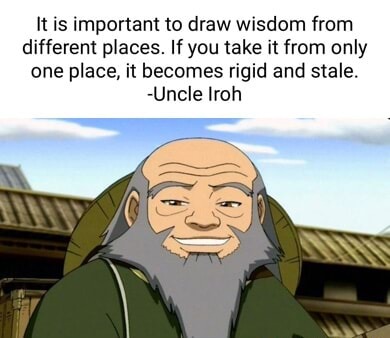
References
Chavey, L. (2020) Parallels between ‘avatar: The last airbender’ and history make a captivating fictional world, The Stanford Daily. Available at: https://stanforddaily.com/2020/08/25/parallels-between-avatar-the-last-airbender-and-history-make-a-captivating-fictional-world/#:~:text=Each%20of%20these%20four%20nations,Nomads%20by%20Tibetan%20Buddhist%20monks. (Accessed: 26 November 2023).
McGinnis, M. (2021) Fandom is love. fandom is family. fandom is representation., Mindy McGinnis. Available at: https://www.mindymcginnis.com/blog/rachelle-storm (Accessed: 26 November 2023).
Robbins, L. and Kullman, J. (2020) Diversity in fandom: How the narrative is changing, ASU News. Available at: https://news.asu.edu/20191018-creativity-diversity-fandom-how-narrative-changing (Accessed: 26 November 2023).
Vilenchik, N.K. and Schultz , J.M. (2011) Experiencing fan activism: Understanding the power of fan activist , ResearchGate. Available at: https://www.researchgate.net/publication/259823285_Experiencing_fan_activism_Understanding_the_power_of_fan_activist_organizations_through_members’_narratives (Accessed: 26 November 2023).
4 notes
·
View notes